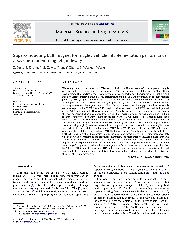摘要
High-temperature superconducting (HTS) maglev vehicle is well known as one of the most potential applications of bulk high-temperature superconductors (HTSCs) in transported levitation system. Many efforts have promoted the practice of the HTS maglev vehicle in people's life by enhancing the load capability and stability. Besides improving the material performance of bulk HTSC and optimizing permanent magnet guideway (PMG), magnetization method of bulk HTSC is also very effective for more stable levitation. Up to now, applied onboard bulk HTSCs are directly magnetized by field cooling above the PMG for the present HTS maglev test vehicles or prototypes in China, Germany, Russia, Brazil, and Japan. By the direct-field-cooling-magnetization (DFCM) over PMG, maglev performances of the bulk HTSCs are mainly depended on the PMG's magnetic field. However, introducing HTS bulk magnet into the HTS maglev system breaks this dependence, which is magnetized by other non-PMG magnetic field. The feasibility of this HTS bulk magnet for maglev vehicle is investigated in the paper. The HTS bulk magnet is field-cooling magnetized by a Field Control Electromagnets Workbench (FCEW), which produces a constant magnetic field up to I T. The levitation and guidance forces of the HTS bulk magnet over PMG with different trapped flux at 15 mm working height (WH) were measured and compared with that by DFCM in the same applied PMG magnetic field at optimal field-cooling height (FCH) 30 mm, WH 15 mm. It is found that HTS bulk magnet can also realize a stable levitation above PMG. The trapped flux of HTS bulk magnet is easily controllable by the charging current of FCEW, which implies the maglev performances of HTS bulk magnet above PMG will be adjustable according to the practical requirement. The more trapped flux HTS bulk magnet will lead to bigger guidance force and smaller repulsion levitation force above PMG. In the case of saturated trapped flux for experimental HTS bulk magnet, it is not effective to improve its maglev performances by increasing of charging magnetic field, when the guidance force at WH 15 mm is 5.7 times larger than that by DFCM of FCH 30 mm. So introducing HTS bulk magnet into the present maglev system is feasible and more controllable to realize stable levitation above applied PMG, which is an important alternative for the present HTS maglev vehicle.
- 出版日期2008-6-15
- 单位西南交通大学
